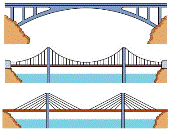Civil and Environmental Engineering, Department of

Department of Civil and Environmental Engineering: Faculty Publications
Document Type
Article
Date of this Version
2014
Citation
Energy Procedia 63 (2014) 3339 – 3346
doi:10.1016/j.egypro.2014.11.362
Abstract
Ensuring geomechanical integrity is a critical factor in the successful operation of geological CO2 storage. Injecting pressurized cold CO2 into a reservoir will trigger two geomechanically coupled phenomena, hydro- and thermomechanical coupling, which should be taken into account when determining the maximum sustainable pressure limit. In this regard, we briefly introduce poroelastic and thermally induced stresses as cold fluid is injected into a geologic formation. We then propose new equations that incorporate pore-pressure/stress coupling and thermal stress effects to calculate for various stress regimes—including normal-, reverse-, and strike-slip faulting—the maximum pressure limit before reactivation of preexisting fractures. The suggested equations are tested for a case study in the literature in which the maximum pressure limit was estimated based on complex numerical simulations. Lastly, sensitivity analysis based on these suggested equations sheds light on how sensitive the maximum pressure limit is to several input parameters, including saturated rock density, Biot’s coefficient, Poisson’s ratio, initial total horizontal-to- vertical stress ratio, temperature drop, and Young’s modulus.


Comments
2014 The Authors.